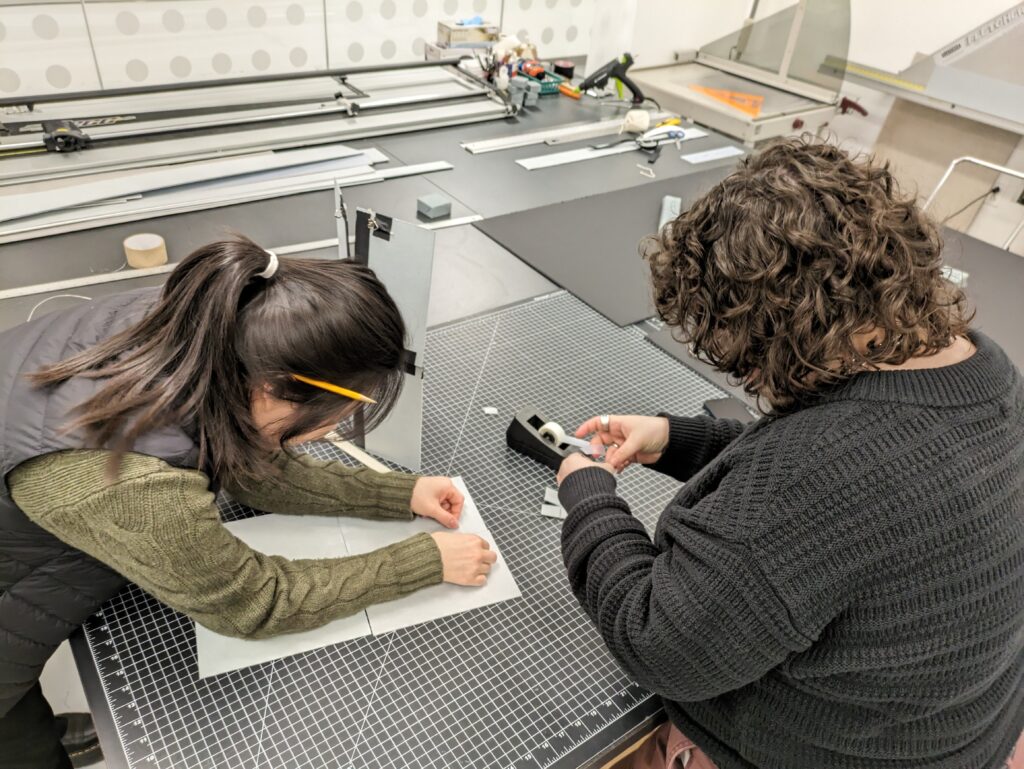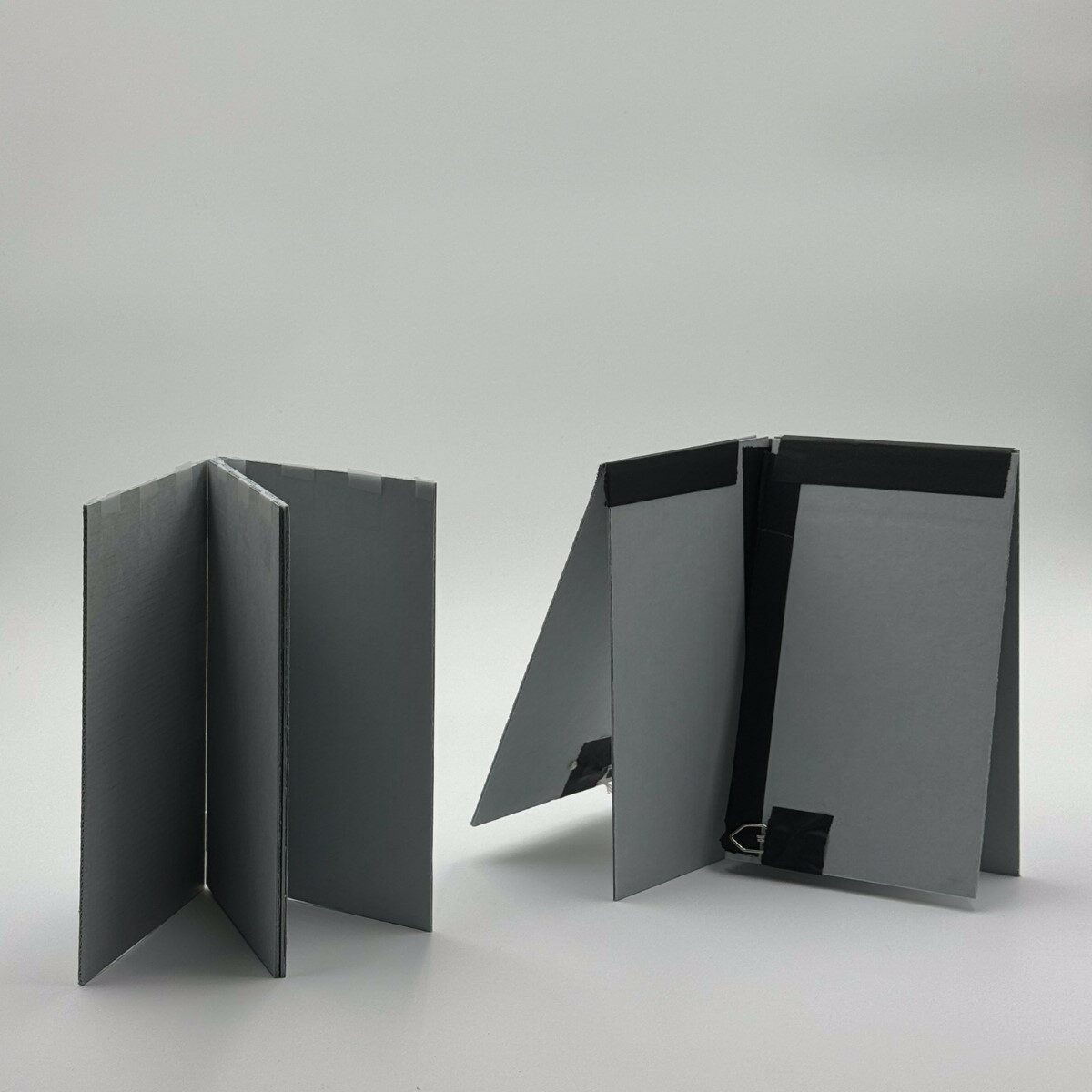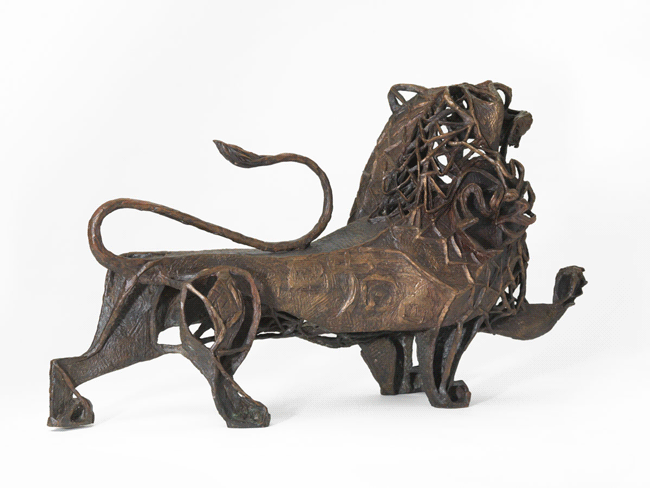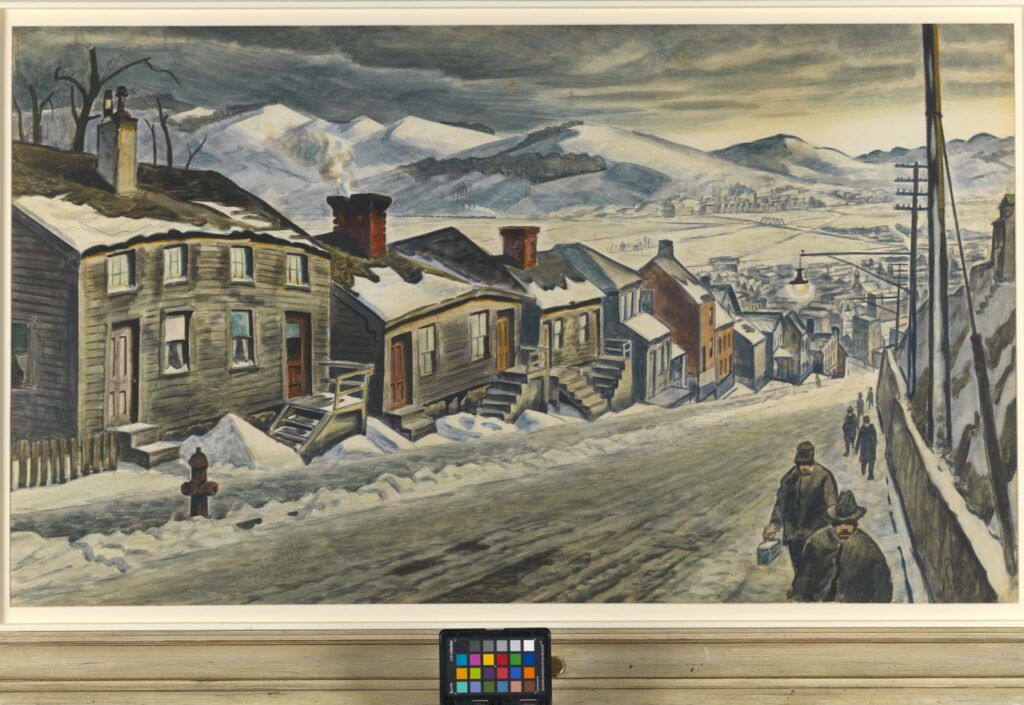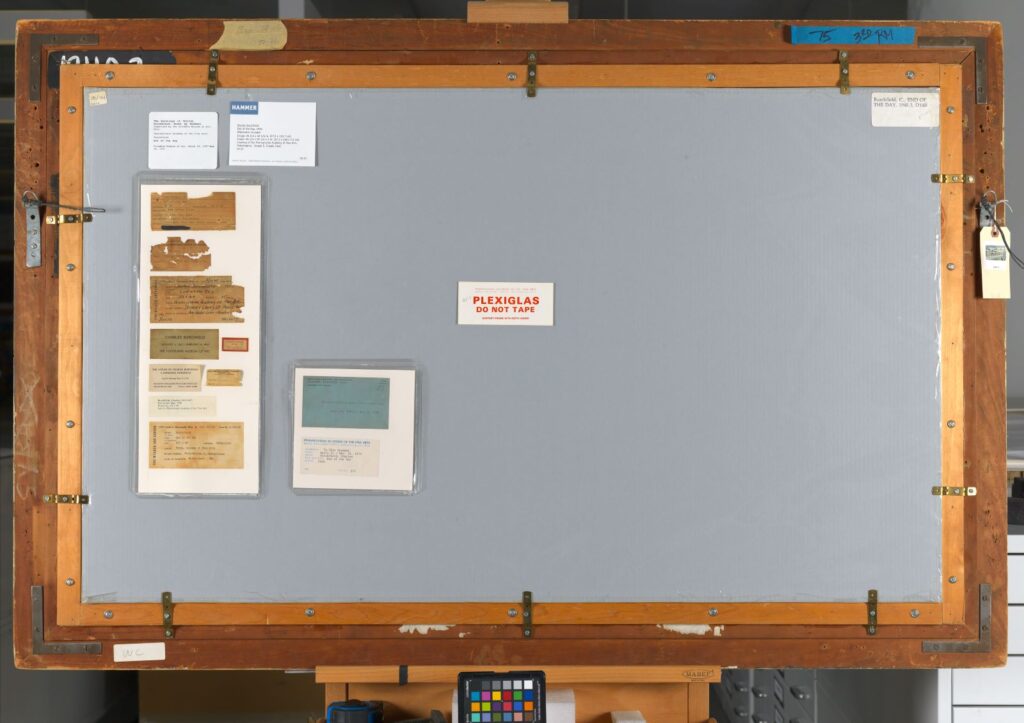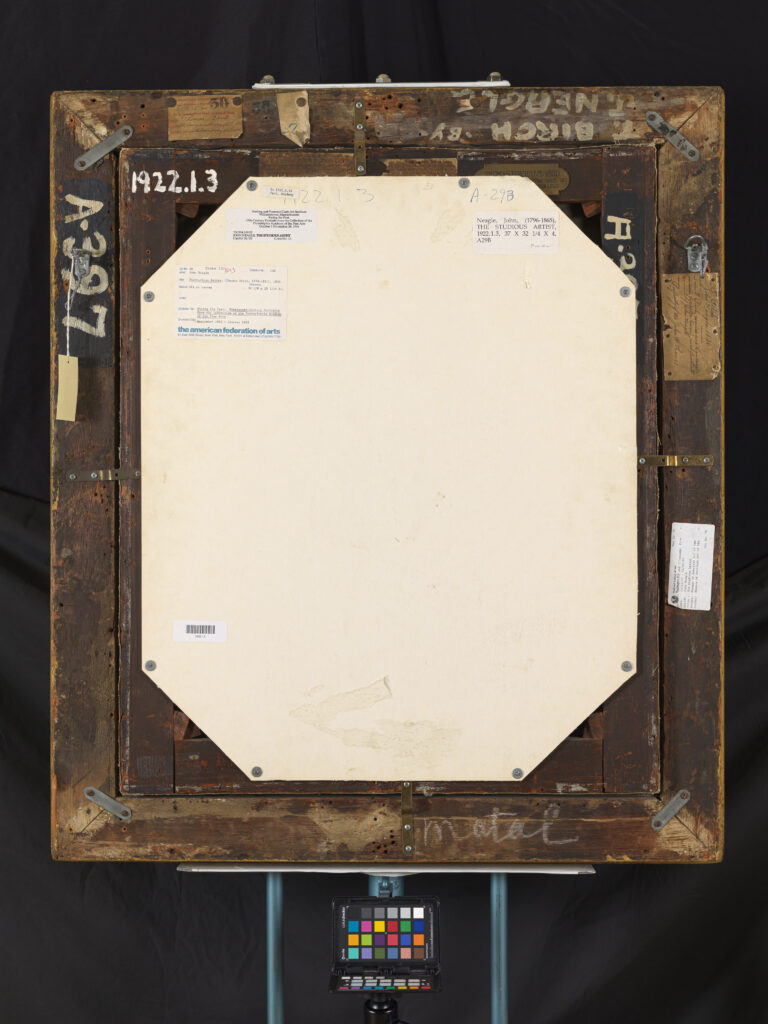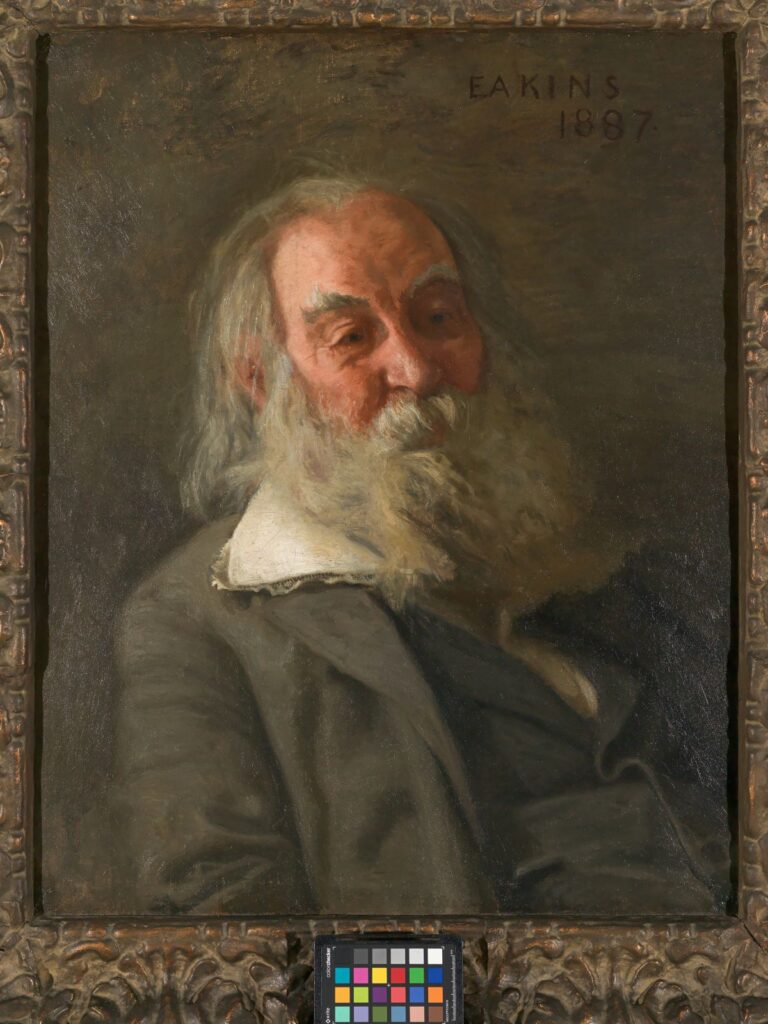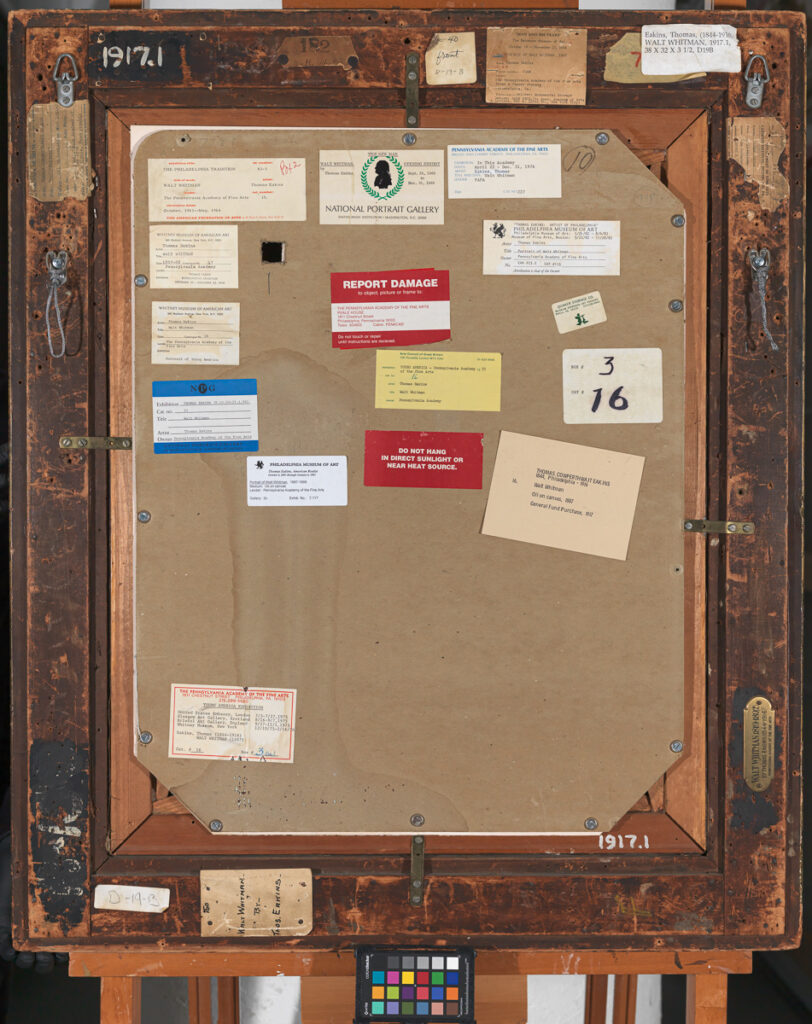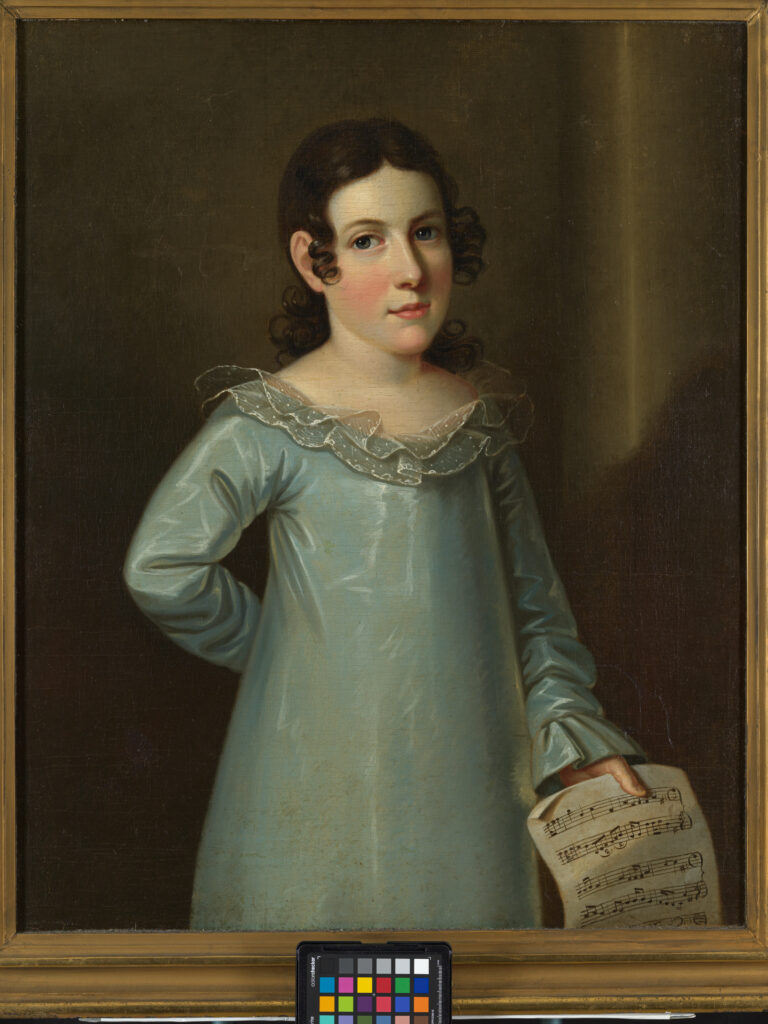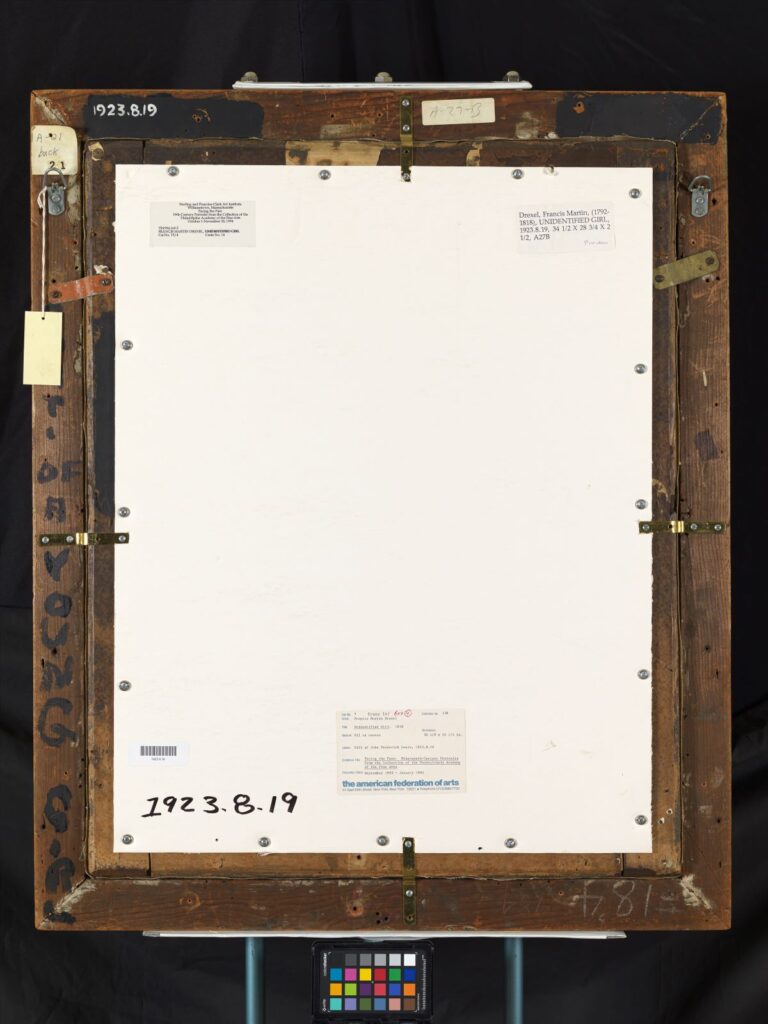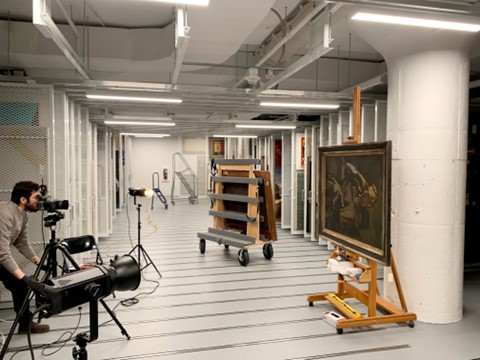Contribute by Zoe Smith, IMLS Collections Photographer
Photographing sculptures that have ornate details or a unique shape can cause some logistical issues. For each one, we need to assess how to photograph it individually in the safest way. Occasionally we mount paintings or sculptures to a wall or an easel, use foam blocks to protect the corners, and other times we can place an artwork directly on a table to photograph. For the piece Thomas P. Anshutz by Adam Pietz (accession #1938.6) there were tiny legs underneath the rectangular portion of the work. Because of this, it wouldn’t fit on our easel right side up, so we had to place it on its side. I wanted the lighting of each relief sculpture to be consistent throughout our collection, so I had to get creative with the lighting. I had to place a large soft box above the sculpture facing the hair of Thomas P. Anshutz. Another smaller softbox was below the camera also pointed at the face. I needed a little more highlights on the top and bottom of the piece, so I added a reflector and an umbrella attached to a light set to a low power. The result had a mix of lighting to show the shape and dimension of the relief, and it matched the other relief photographs.

Another setup included hanging a fragile plaster piece by Beatrice Fenton, Life Cast of Emily Clayton Bishop’s Left Hand (accession #1984.43). We screwed into a piece of wood and used white gaff tape to cover the hardware to minimize any unwanted color cast onto the sculpture. Every piece requires a new and challenging setup to get the best results.

